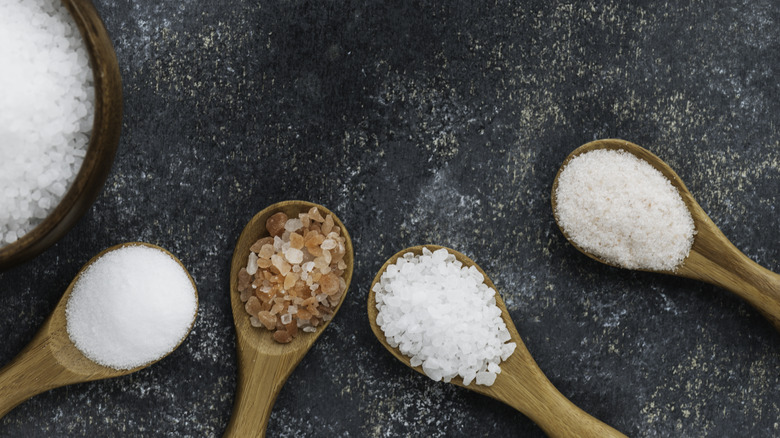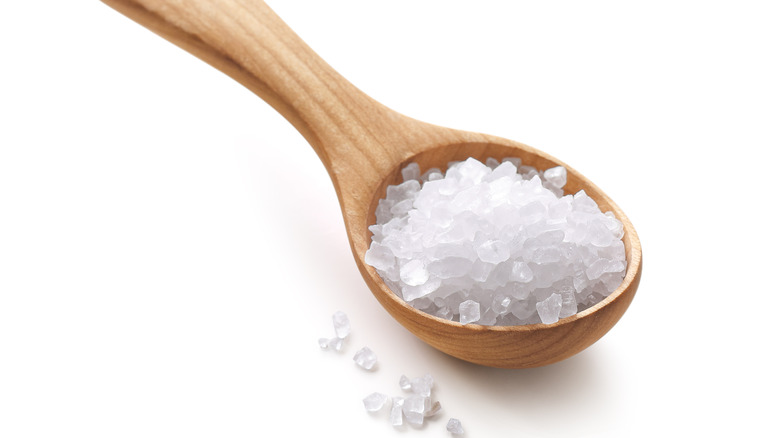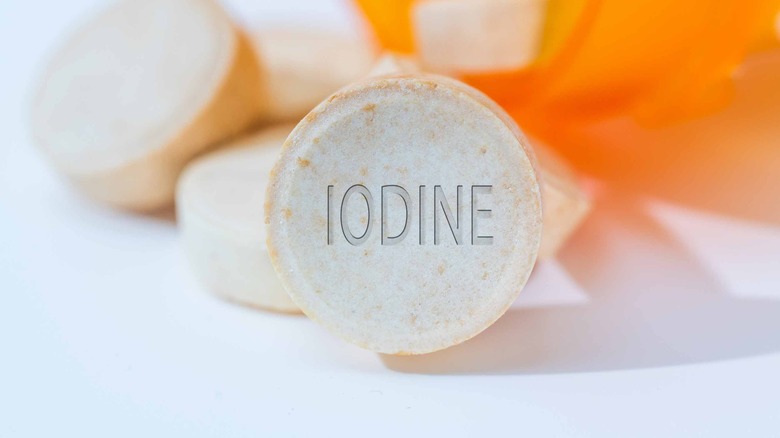The Differences Between Table And Sea Salt
Salt is one of the building blocks of cuisine — there's a reason the book by author and food scientist Samin Nosrat is called "Salt, Fat, Acid, Heat." Pretty much every cuisine on the planet makes use of salt (or something that serves the same purpose) as the basis of any seasoning because there's nothing else that is as effective as a flavor enhancer. However not all salt is the same, and different types of salt have different advantages and disadvantages.
But while there are several of different types of salt, there are two common ones that matter for everyday usage: Table salt and sea salt. While they're certainly more similar than they are different, there are a few notable distinguishing factors. They're processed differently, for one thing, but they're also often visually distinct, too. And while for the most part, the two types of salt have essentially the same nutritional profile, there's a key difference: Iodine is used to fortify table salt.
Sea salt and table salt come from totally different sources
The first obvious difference between table salt and sea salt often is the way they look. In most cases, table salt appears as fine crystals, whereas sea salt is coarser and thicker. This does affect how each is used; though many recipes could call for either, in something like baking that requires careful measurements, you generally want to avoid sea salt, because the large, coarse grains can make measuring imprecise. Despite this size difference, there's no truth to the idea that the larger grains of sea salt have a bolder taste – although the texture certainly varies, as larger sea salt grains can add a notable crunch to foods compared to table salt.
There's a reason for these differences, and it comes down to where each type of salt originates. Table salt and sea salt come from totally different biomes. Sea salt's name is not a fanciful descriptor, it's quite literally made from evaporating salt water — either from the ocean or from saltwater lakes. The thick grains of salt undergo little to no processing after harvesting. Table salt, though, comes from actual salt mines underground on land, and is more heavily processed after its extraction.
There's only one main nutritional difference between the two
At a core level, there's no significant nutritional difference between table salt and sea salt. One is not generally better for you than the other, even though sea salt is sometimes credited that way. Table salt's processing does remove some minerals, but they're largely trace minerals (typically calcium, potassium, and magnesium) you can easily get from other foods.
The key difference is that table salt is often fortified with iodine. This is significant because iodine is something your body can't naturally produce — and it serves a key role in thyroid regulation. So while table salt and sea salt are certainly quite similar, at the same time, they're also quite distinct. Just know that you can usually substitute one for the other, keeping in mind where the texture of sea salt will affect the dish. If you're baking, or are watching your iodine levels, you may want to stick to table salt.


